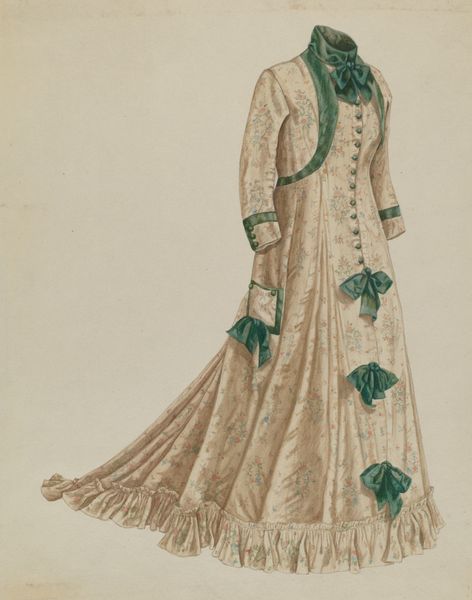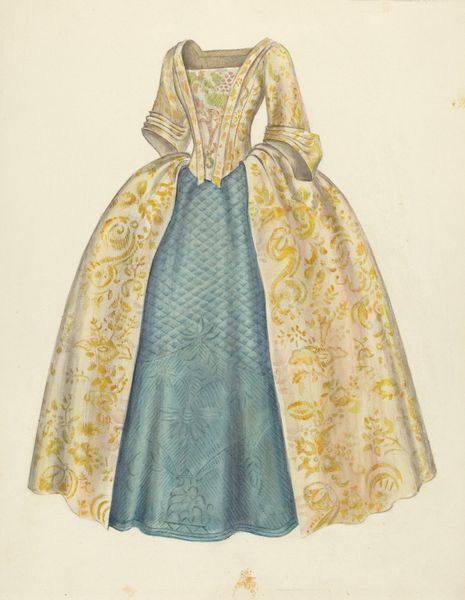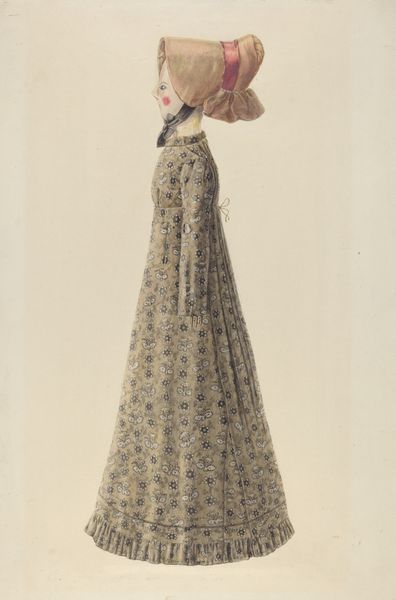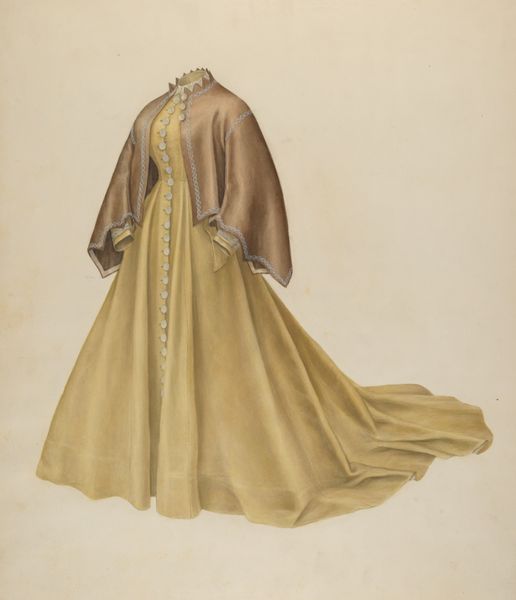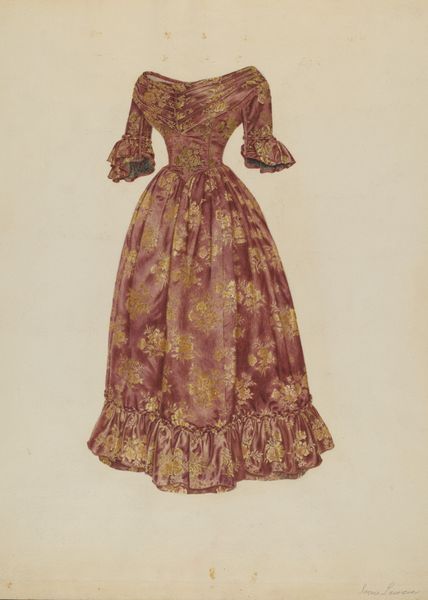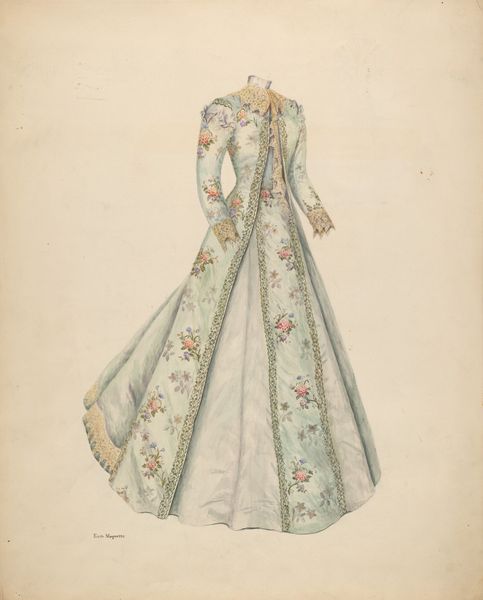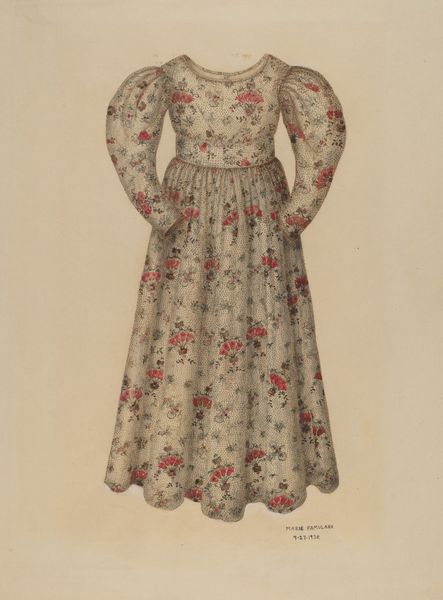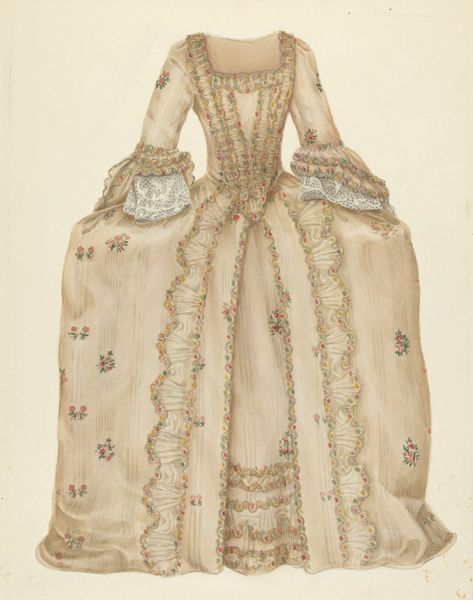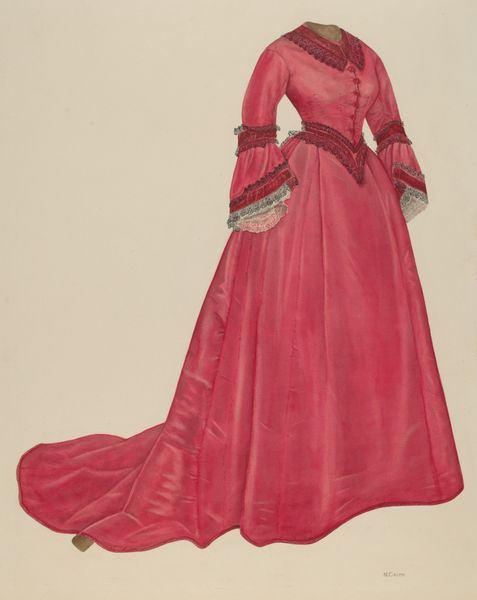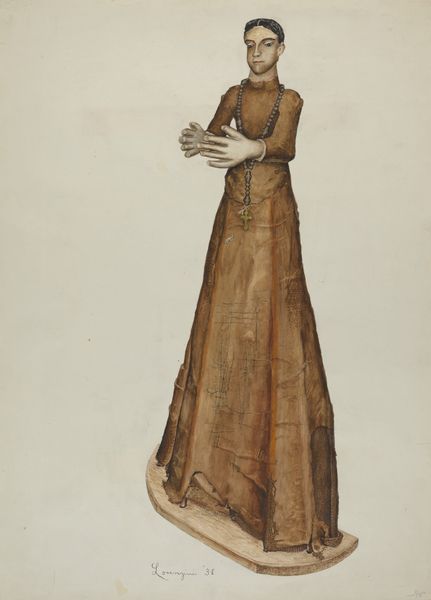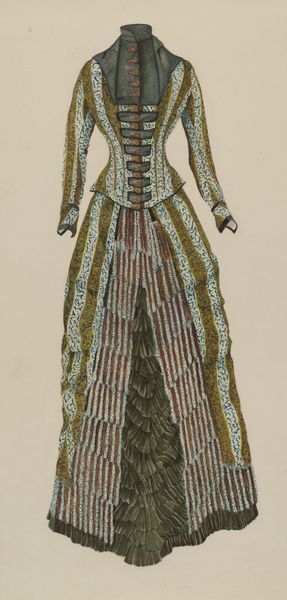
drawing, watercolor
#
drawing
#
light pencil work
#
feminine design
#
fashion mockup
#
fashion and textile design
#
watercolor
#
historical fashion
#
underpainting
#
asian style outfit
#
watercolour illustration
#
decorative-art
#
watercolor
#
ethnic design
Dimensions: overall: 44.5 x 35.1 cm (17 1/2 x 13 13/16 in.)
Copyright: National Gallery of Art: CC0 1.0
Curator: Looking at "Brocade Costume," a watercolor and pencil drawing from around 1938 by Isabelle De Strange, what strikes you first? Editor: The sheen, actually. Even rendered in watercolor, there’s a definite luminosity and implied texture that suggests a real opulence. You can practically feel the weight of the fabric. Curator: Indeed. Costume design, especially during this period, was deeply intertwined with the socio-economic landscape. These designs often catered to elite tastes, showcasing the artistry available during those times, reflecting a certain level of exclusivity. Editor: I’m intrigued by the method here, beyond just watercolor. It looks like an underpainting was made in light pencil, with watercolour layered to enhance that patterned surface. Do we know where this Brocade Costume was made or for which clientele? I imagine working-class tailors adapting and reimagining these designs. Curator: Documentation is sparse unfortunately, but fashion houses often disseminated their designs widely to influence global trends. The so-called ethnic design aspects also reveals something of early 20th-century orientalism, reflecting how other cultures are viewed by Europeans, as novel aesthetics for European couture. Editor: Absolutely, this interplay highlights fashion's role as both art and commodity, right? The construction, even imagined here, demands specific expertise. We must not overlook the labour involved in producing similar brocades – who dyed the thread, wove the cloth, or stitched it into form? Curator: Precisely, understanding these artistic products within the industry emphasizes how design intersects with issues of class, labor, and the power dynamics embedded in garment production and global exchange. Editor: This has certainly shed light on an intriguing intersection of craftsmanship and socio-economic structure, challenging the traditional notion of viewing artworks in isolation. Curator: Yes, situating designs like these within historical, material, and social contexts allows for a richer comprehension of its significance.
Comments
No comments
Be the first to comment and join the conversation on the ultimate creative platform.
